Phnom Preah Netr Preah Temple is located atop the small mountain of the same name in the village of the same name features the remains of an ancient temple and rock carvings along with a contemporary monastery and pagoda.
The ancient temple site is located on the southern side of the contemporary pagoda where a sprawling array of sandstone pieces including door frames, lintel, and numerous sandstone plinths are seen along with a bollard indicating the site once had a grand entrance. The temple also has a spectacular view of the lands below. Near the pagoda, there are also some decorated door columns attached to a contemporary structure.
Several inscriptions were recorded from door frames and registered under K 215 and K 216. The inscriptions (translated by George Cœdès in the early to mid-1900s), in Sanskrit and Khmer, give dates of the mid-10th century and early 11th century noting the restoration of a Shivite ashrama (or acrama/asrama), inheritance and religious authority matters.

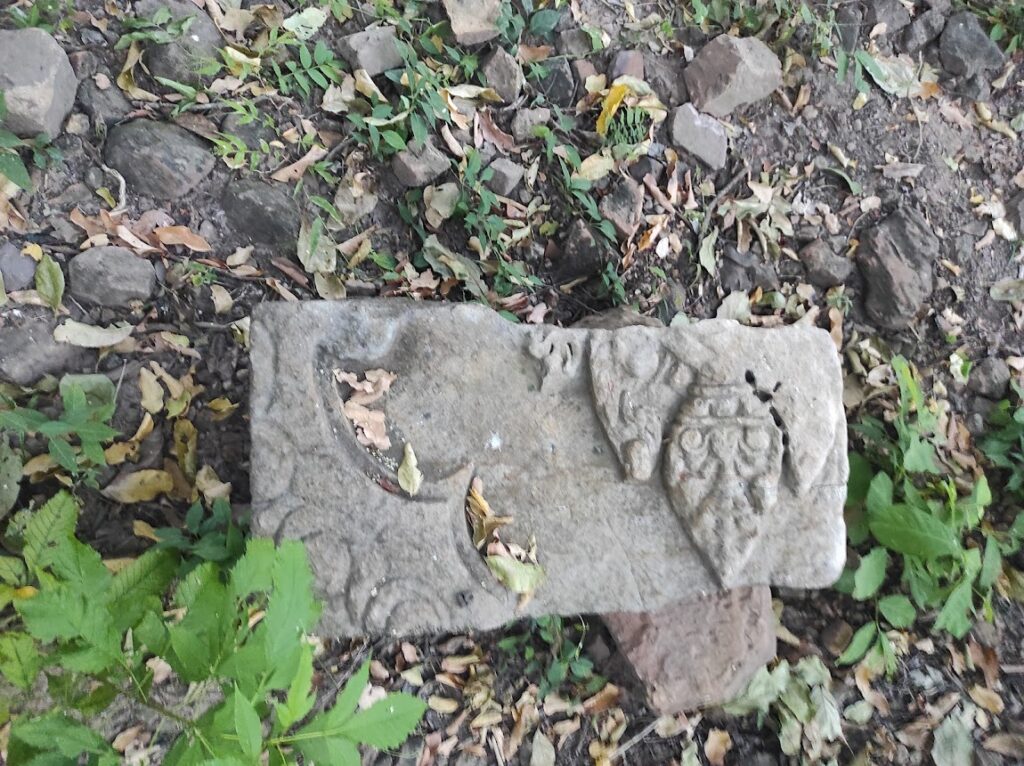
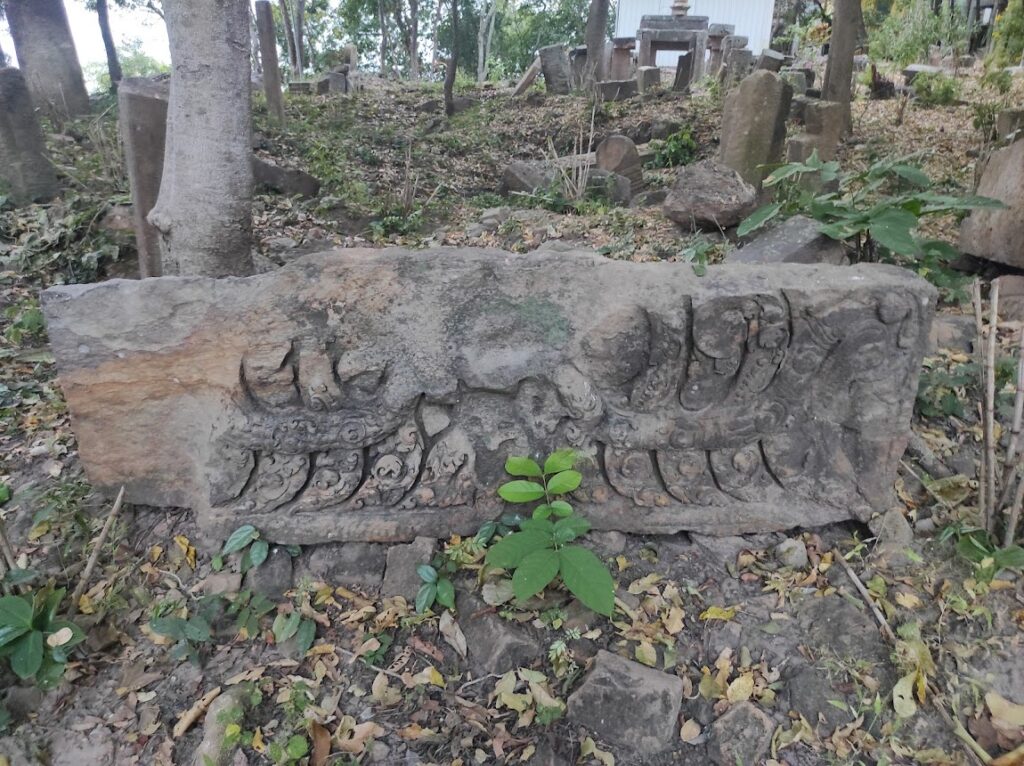



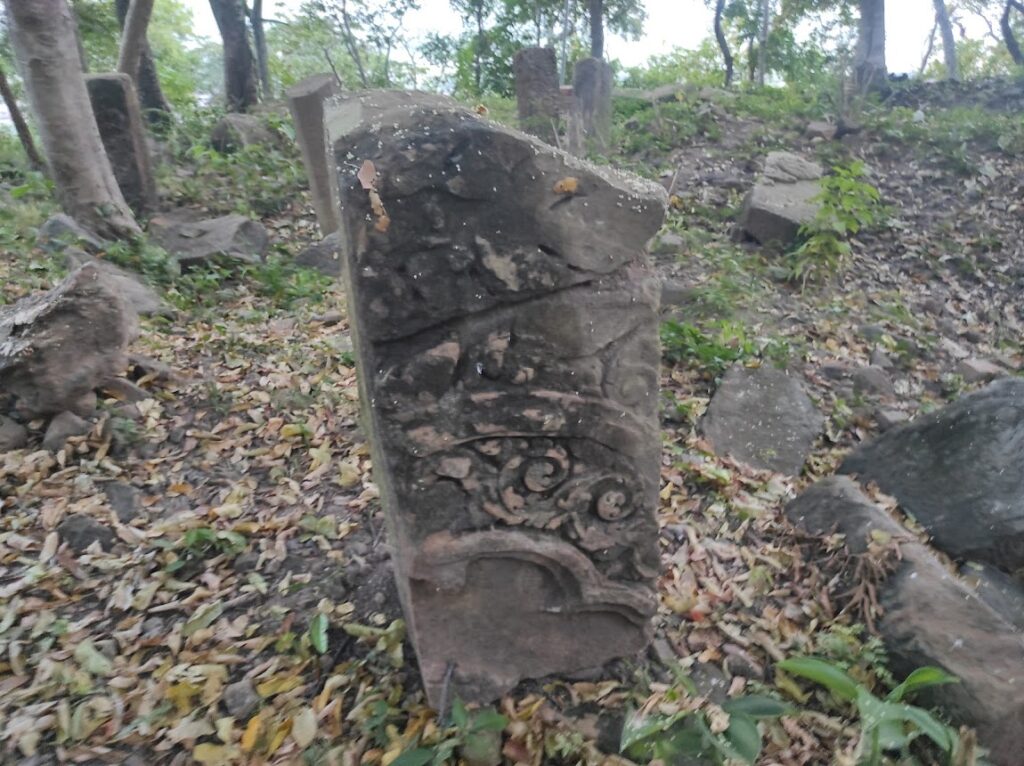


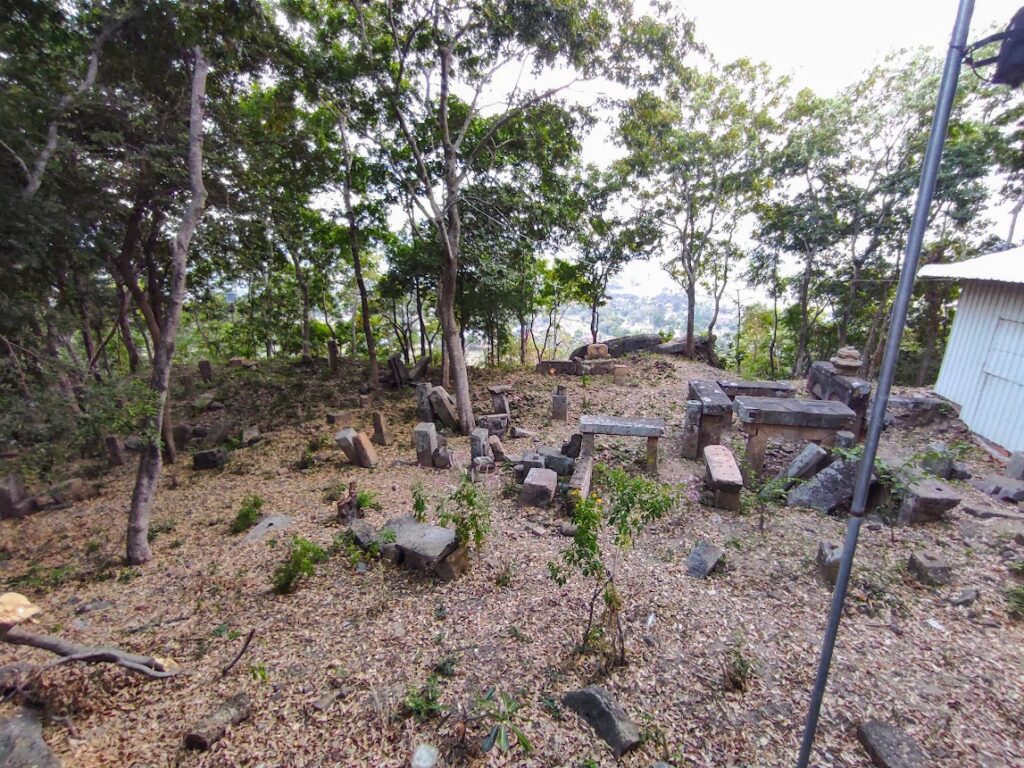
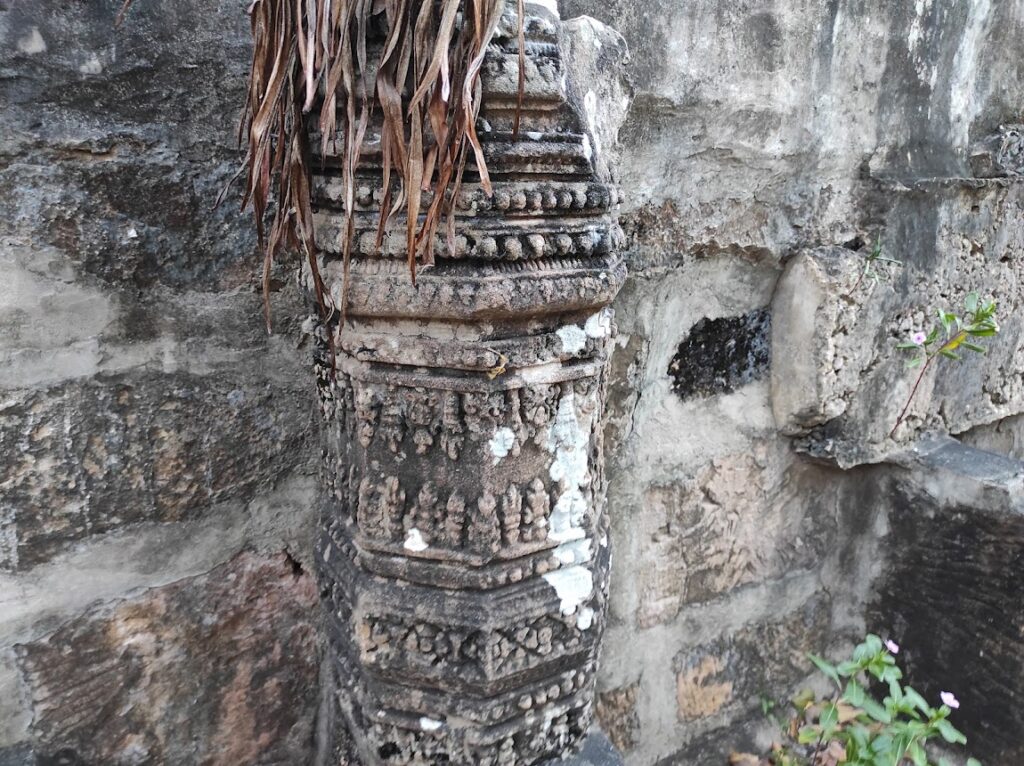
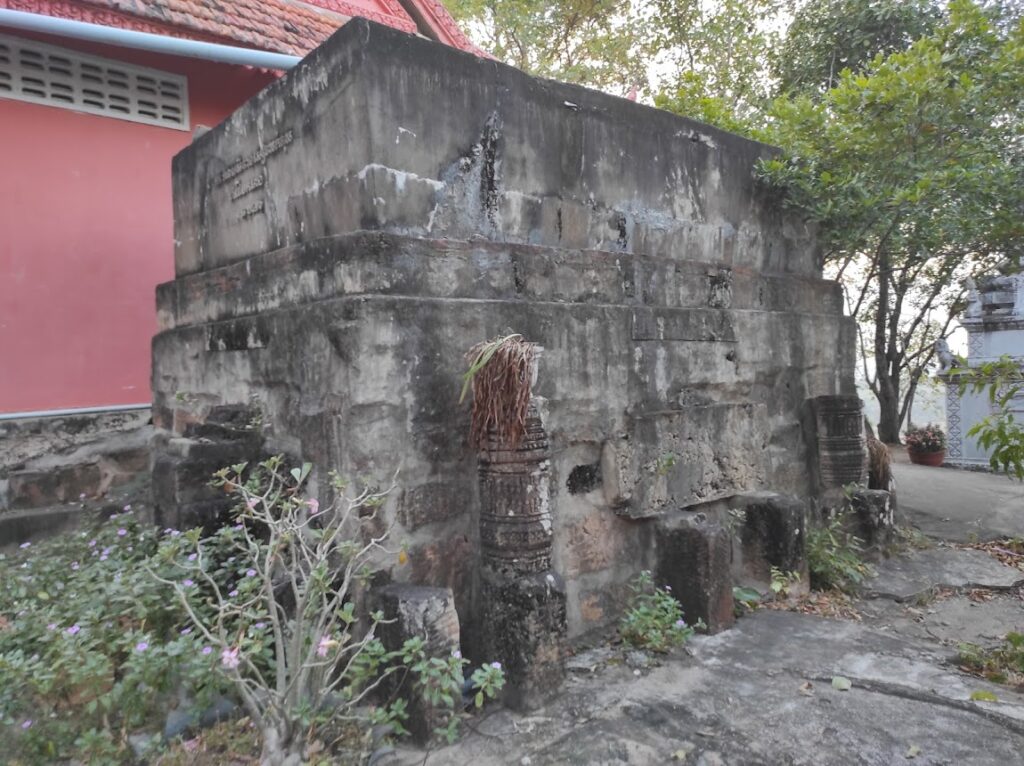
Near the ancient temple, you can also see a small pond formed by erosion and carved into the shape of a crocodile. Also nearby is the platform of a gun turret, remnants from the war era.
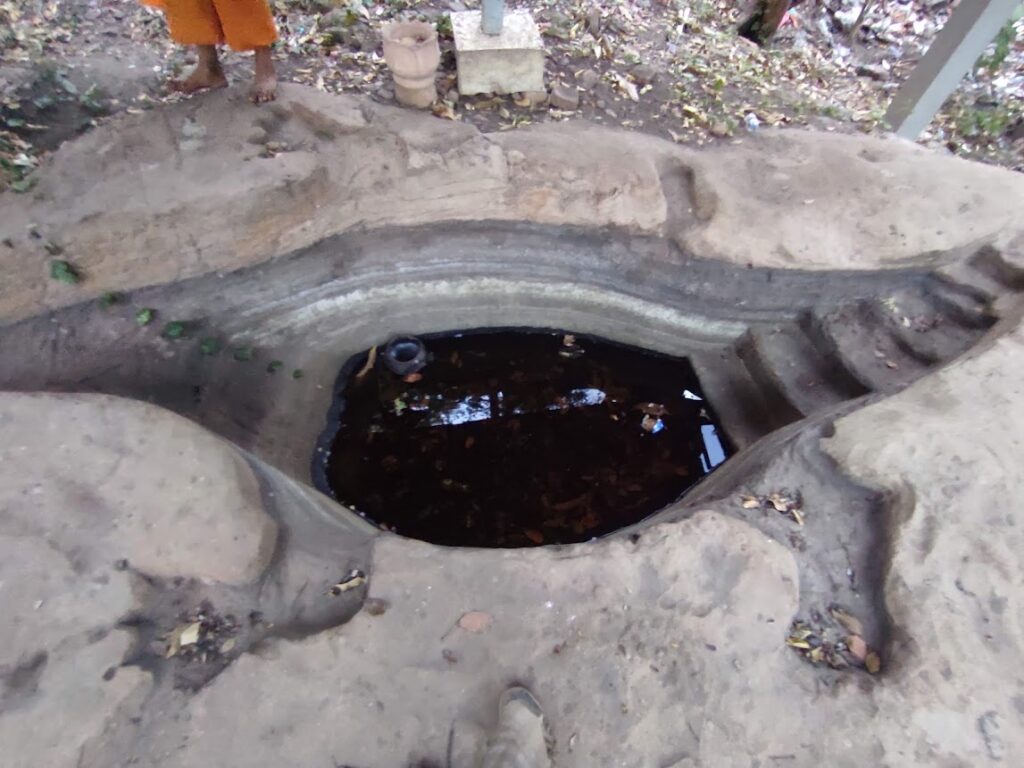

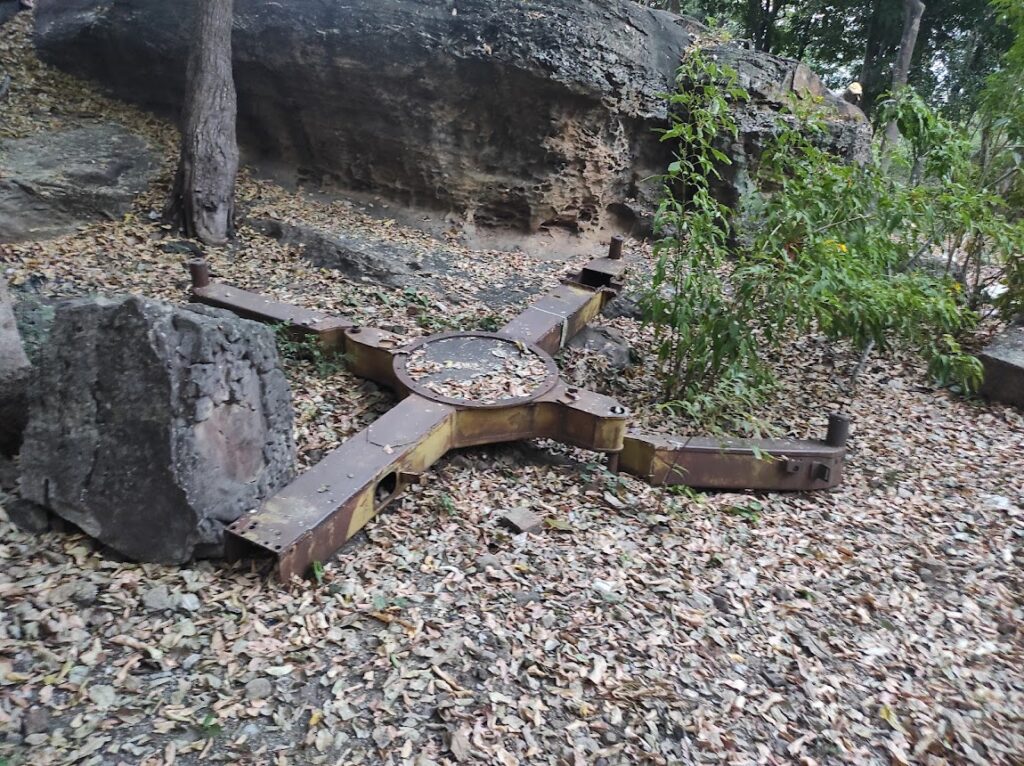
Nearby the monk’s quarters and cremation stupa is an elephant carving.
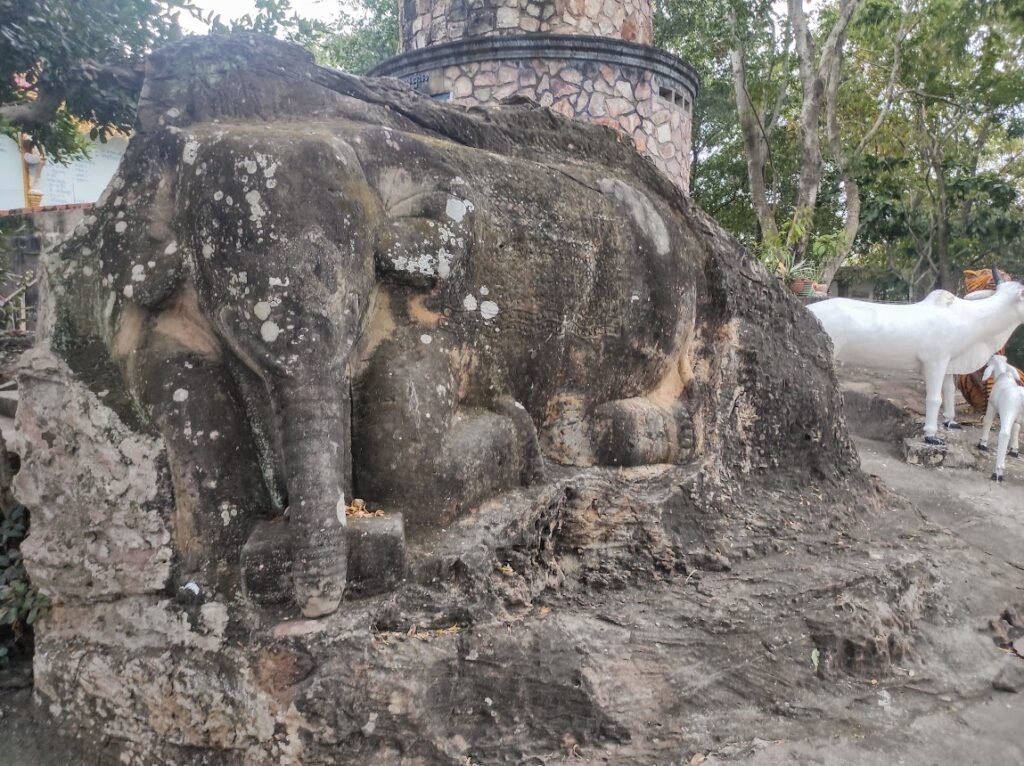

Another major feature is the large rock monoliths on the northern edge of the mountain that feature Buddhapadda (Buddha’s feet) imprints and two small ponds with spectacular uninterrupted views out over the lands below.
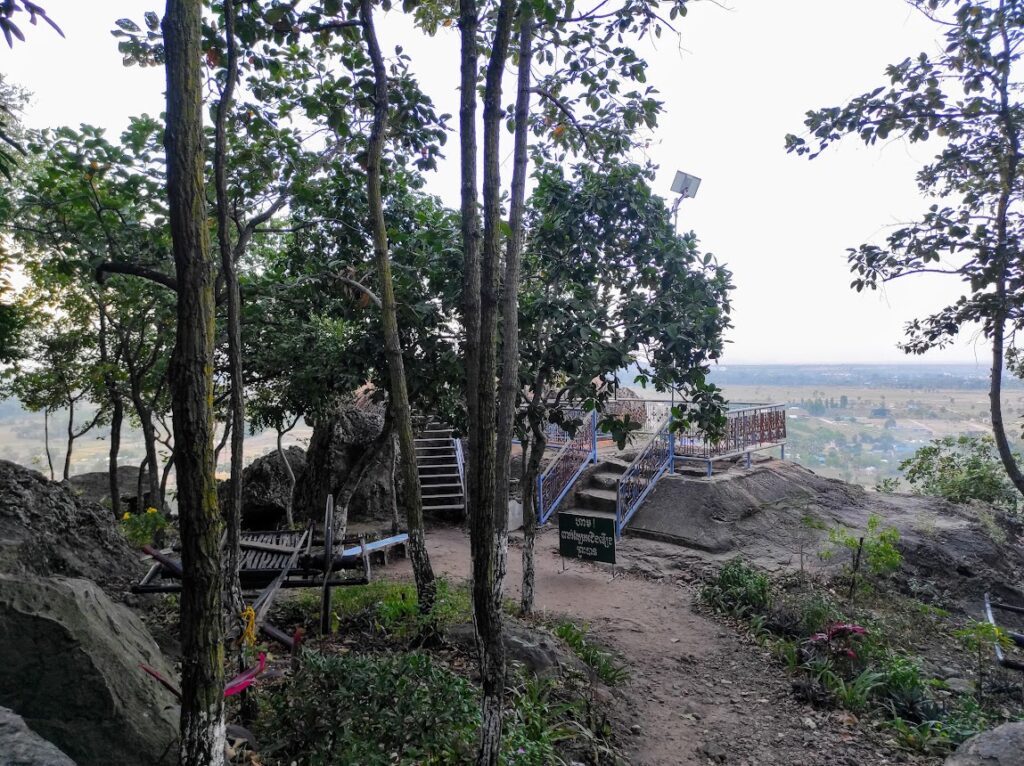
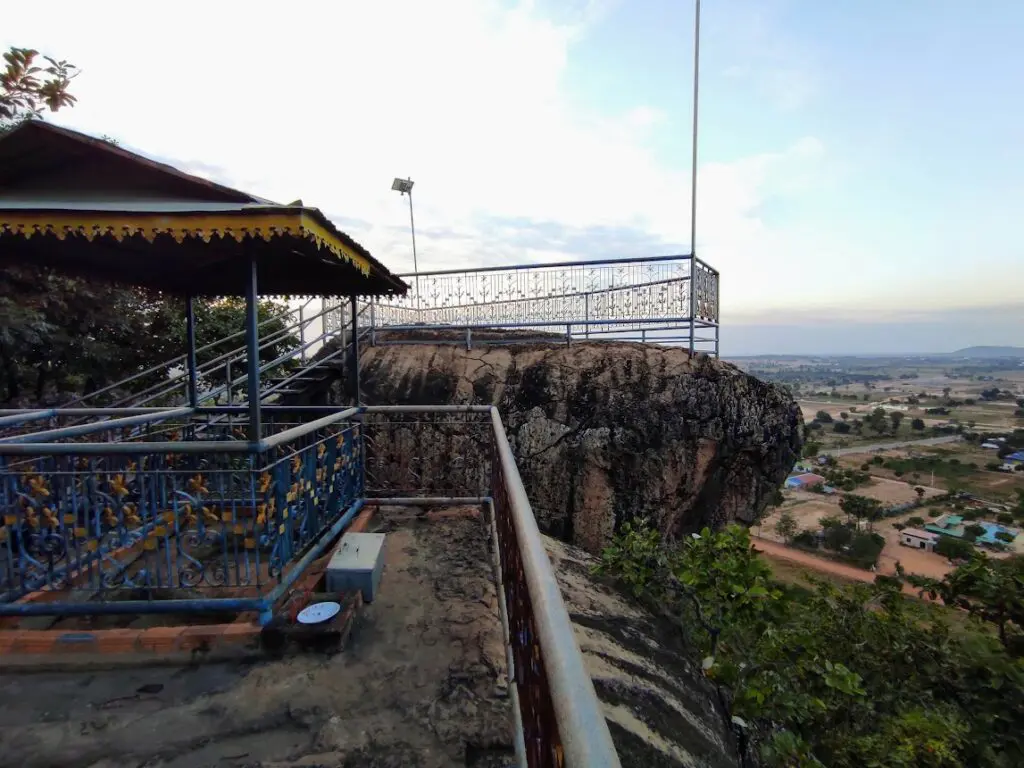


The site is reached via sealed roads heading south of Road 6 and the mountain is accessed by a concrete road leading from the eastern side suitable for cars or moto, followed by an easy staircase to the top.


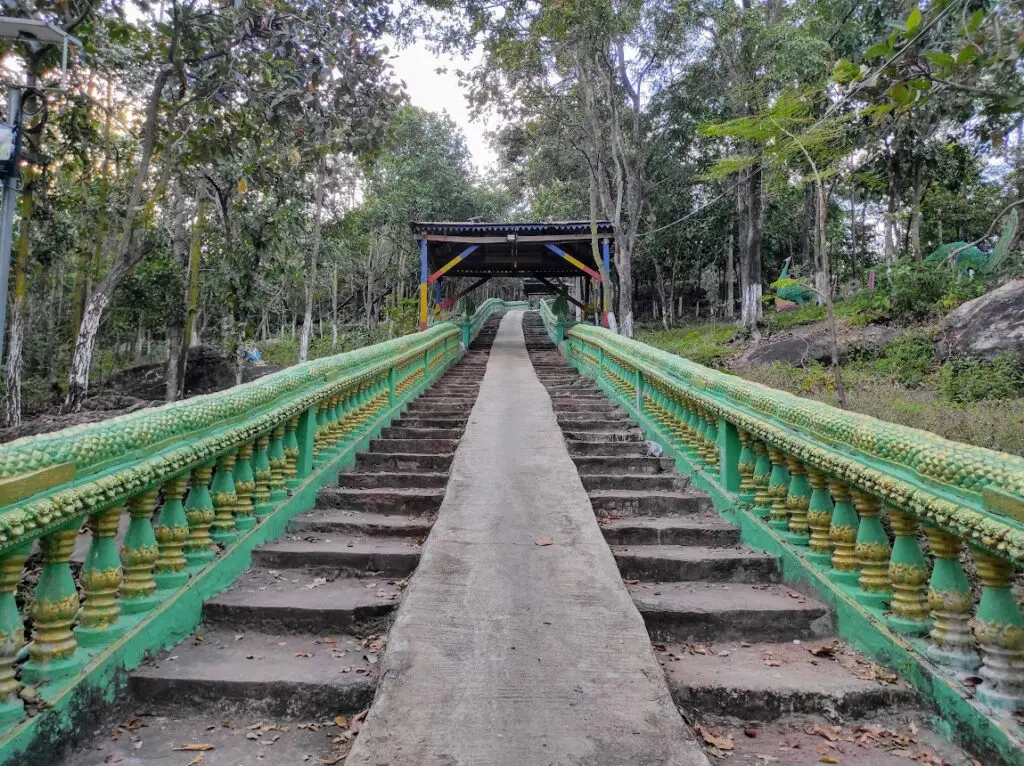
Historical Notes
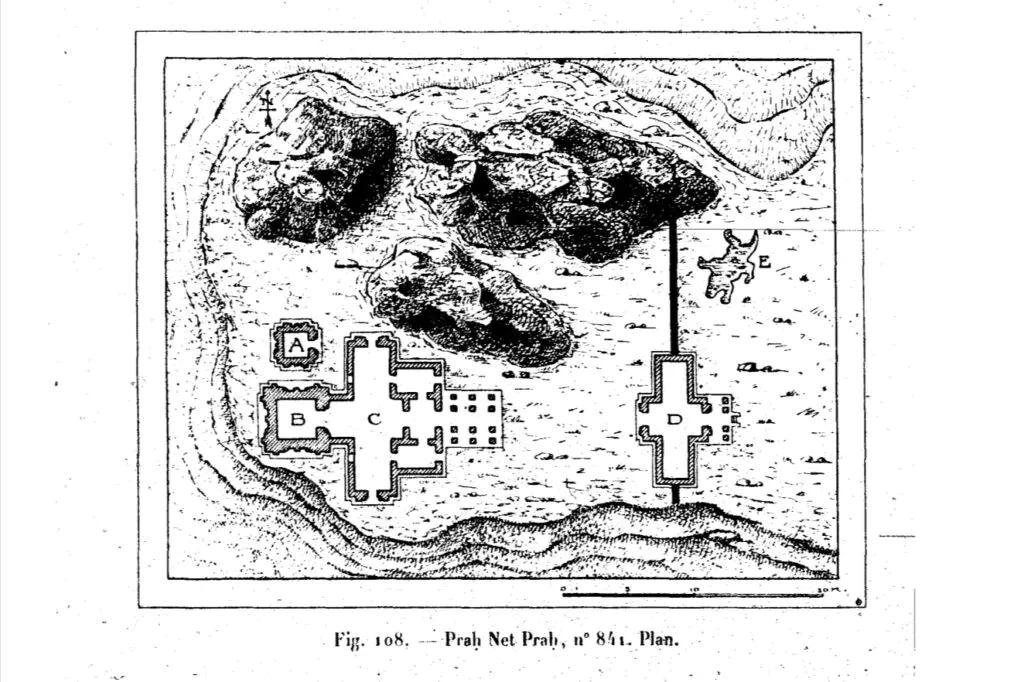
Praḥ Net Prah (“The Sacred Eye of the God”). It is the name of a sandstone mound which rises about 80 meters above the surrounding plains, quite in the western part of the srok Turk Cho and not far from the river of Sisophon (fig. 108 ).
Near the summit, between the southern slopes which are quite steep and the large sandstone uplifts which constitute the very rump of the elevation, are the ruins of a rather confused series of constructions. in bricks, today almost completely razed.
There are first, to the W., two brick sanctuaries, A, B, of very general dimensions but arranged on the same line and both oriented to the E. That of N., 4, smaller, is completely ruined and forms nothing more than a heap of rubble. That of the S., B. whose N. and S. faces are still standing up to the height of the second step of the dome, is however partly encumbered by trash. You have to dig deep enough to see its sandstone-framed door, and its unfinished type III decorative lintel, where only a frieze of worshipers is nearly complete.
To its door was welded a large nave, C, with a brick vault, with different openings, which is no longer, today, but a heap of debris through which pierce doorframes serving as milestones. It continued to the E. by a triple peristyle whose pillars and architraves have remained unrefined.
A brick gopura, D, with a single passage, whose door frames have remained rough, interrupts about ten meters to the E. an enclosing wall which rested on the one hand on the sandstone bloes, on the other on the very steep southern slope. The frames of the doors of this construction, now partially ruined, remained rough, and we did not find any decorative pieces there.
An alley of pillars marked out, it seems, the avenue between gopura and the peristyle of the nave which are guarded by two stone lions.
Outside, a rough-hewn statue and some fragments of statuettes were thrown down the steep slope. Near the entrance, in a block of sandstone, a natural crevasse of the rock, no doubt, has been converted into a kind of pool, E, .9m deep, 4 meters long, and 1.6 m wide, which has been given the shape of a crocodile.
We also find in a small cave, following the path that climbs the eastern slope, some sculptures carved on the very wall of the rock, the image of an eight-armed god between two worshipers and also a well more than one meter, hence the name given to this mound.
Le Cambodge, Etienne Aymonier, 1901
Inscriptions
- K. 215 – doorjamb- 2 lines of Sanskrit and 16 lines of Khmer – IC III, p. 34
- K. 216 – doorjamb – 13 + 26 + 6 lines of Khmer and 1 + 24 lines of Sanskrit – IC III, p. 37, p. 40
Map
Site Info
- Site Name: Phnom Preah Net Preah Khmer Name: ប្រាសាទភ្នំព្រះនេតព្រះ
- Reference ID: HA22334 | Posted: December 26, 2021 | Last Update: January 10th, 2022
- Other Names: Prasat Phnom Preah Netr Preah, Prah Net Prah
- Tags/Group: 10th Century, Acrama, c, nwgc, pa, Temples
- Location: Banteay Meanchey Province > Preah Netr Preah District > Preah Netr Preah Commune
- IK Number: 841
- Inscription Number/s: K. 215, 216

